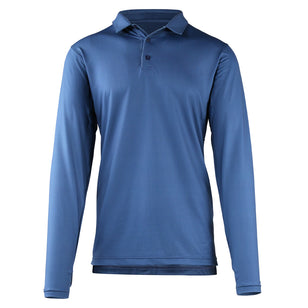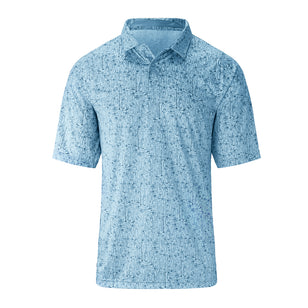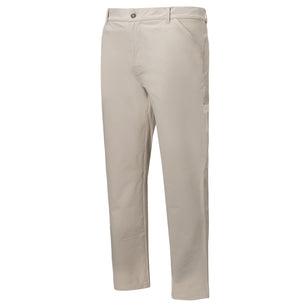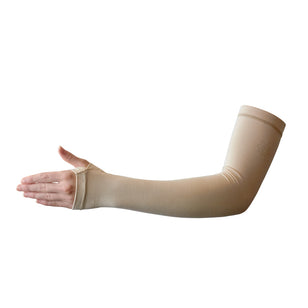Tee Off Safely: Mastering UV Protection on the Golf Course
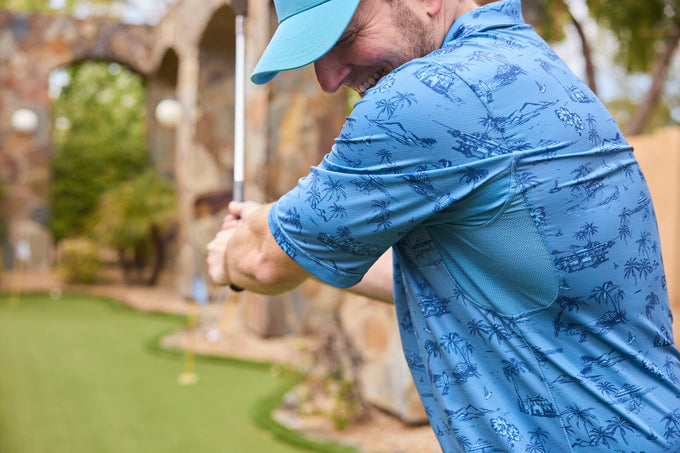
Spending a day on the golf course is a great way to challenge your skills, relax, and appreciate the beauty of nature. However, amidst the focus on swings and scores, there's a significant but often overlooked risk: prolonged exposure to the sun's UV rays. As a golfer, understanding and addressing this risk is crucial for your long-term health.
Understanding UV Exposure in Golf
Golfers are particularly vulnerable to UV exposure due to several factors inherent to the sport. A typical round of golf lasts about four hours, but on busy days, it can stretch to five or six hours. During this time, you're mostly outside, directly under the sun, with very little shade. The sheer amount of time spent in the sun significantly increases your risk of skin damage.
Adding to the problem, the environment of most golf courses enhances UV exposure. Surfaces like water hazards and sand traps don't just challenge your game—they also reflect UV rays. Even the grass and fairways reflect harmful UV rays, increasing your overall exposure. Research suggests that these reflective surfaces can boost a golfer's UV exposure by up to 50%.
This extended and intensified exposure goes beyond the risk of sunburn. UV rays can penetrate the skin and alter the DNA of skin cells, leading to premature aging and an increased risk of skin cancer. For regular golfers, this isn't an occasional risk—it's a frequent, cumulative exposure that can lead to significant health issues over time.
The Critical Need for Sun Protection on the Course
Given the significant time spent outdoors and the reflective characteristics of golf courses, golfers face an elevated risk for UV-related skin damage. Implementing effective sun protection strategies is crucial, not just advisable, to minimize cumulative damage and protect your long-term health.
How to Guard Against UV Exposure
1. Choose Your Tee Time Wisely
UV rays are at their strongest between 10 a.m. and 4 p.m. If you can, schedule your tee times for early morning or late afternoon. Not only will you avoid the worst of the sun's rays, but you'll also enjoy quieter courses and potentially cooler weather.
2. Dress Smart
Throw on light layers that breathe and cover. Long sleeves might sound counterintuitive for staying cool, but with the right materials, they can actually help keep your body temperature regulated while protecting your skin. Look for clothing that offers UPF 50+ protection, meaning it blocks out most of the sun's harmful rays.
3. Don't Skimp on Sunscreen
Slather on a broad-spectrum sunscreen SPF 30 or higher, and remember, reapplication is key—every two hours, or more often if you're sweating. Many golfers miss spots like the back of the neck, ears, tops of hands, and even the scalp—yes, your scalp can burn, and if you're not a hat-wearer, consider a sunscreen stick for easy application.
4. Accessorize for Safety
Sunglasses are a golfer's best friend—not just for clarity of vision in full sun, but for protection. UV-blocking sunglasses protect your eyes, which can suffer from prolonged exposure to sunlight, increasing the risk of serious conditions like cataracts and macular degeneration.
5. Hydrate
It might not seem directly related to UV protection, but staying hydrated helps maintain your skin's health and resilience. Plus, dehydration can make you more susceptible to sunburn.
Why You Should Care
The effects of UV exposure are cumulative. Each time you hit the course without proper protection, you increase your risk of skin damage and skin cancer. But it's not just about the long-term risks; sunburn can ruin your game and your day, leading to discomfort, fever, and dehydration.
Taking these steps to protect yourself allows you to focus on your game without worrying about the sun's damage. It's about enjoying the game you love today while ensuring you're healthy enough to play another round tomorrow. Remember, sun protection is a part of your best golf strategy. Play it smart, play it safe.


